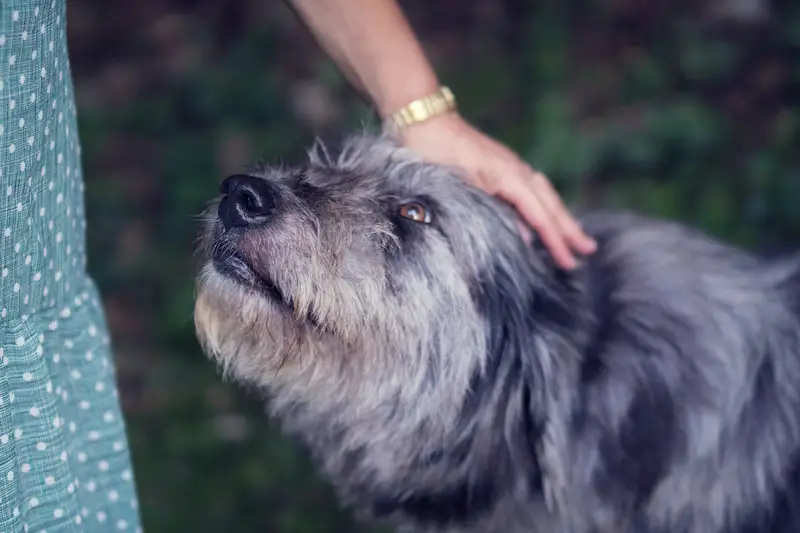Types Of Mental Disorders in Dogs

Humans can suffer from a mental disorder if they experience a set of specific symptoms, usually related to mood, thoughts, and behavior. A mental disorder is diagnosed when these symptoms last for a period of time, such as at least six months, and you notice an impact on social functioning or occupational performance (social, educational, or work-related).
Quite similarly, there are many types of mental disorders that can be present in the canine world. While experts disagree on whether or not dogs experience depression the same way humans do, the condition can affect them and is usually manifested by extreme sadness, withdrawal, or listlessness. Anxiety, excessive worry, or even OCD, where dogs feel compelled to do things repeatedly because it gives them relief from said anxiety, can all be part of your dog’s life.
Let’s take a look at a few more mental disorders that may affect our furry friends:
Separation Anxiety Disorder
Probably the most known and understood mental ailment many dogs struggle with – separation anxiety disorder. This disorder is characterized by panic and distress when the dog’s owner leaves home for any period of time (even if it’s just for five minutes). The symptoms worsen as the length of separation increases and may include destructive behavior like chewing on furniture or urinating inside the house. It is also important to note that these symptoms may arise if the pet parent’s routine has changed, such as working from home rather than in an office.
Dogs are social creatures, and even the species’ wild representatives organize themselves into groups or packs. Isolation is undoubtedly the culprit behind dogs’ anxiety as they seek attachment and connection in order to build their confidence. Certain dog breeds, such as terriers or pinchers, are especially prone to separation anxiety, such as terriers or pinchers.
Noise Phobia
This is a severe case of fear that can be triggered by specific sounds. There are different noise phobias, including thunderstorm phobia, firework phobia, and gunshot or explosion phobia.
Certain breeds are known for their courage and confidence, while others are more fearful and can be quite timid. The latter is more prone to anxiety and acquiring phobias, such as German Shepherds or Border Collies. While there are ways to overcome such fears and build confidence in a dog, genetics likely play a big part in the timid personality trait.
Genetics is not the only way to acquire a phobia. Our dog can become fearful due to the lack of proper socialization with the surrounding environment. Socialization does not mean allowing your dog to play with other dogs – it is a process based on exposure to different stimuli, sounds, and sensations. The first sixteen weeks of your puppy’s life are critical.
Obsessive-Compulsive Disorder – Canine Compulsive Disorder
OCD in dogs is typically characterized by a pattern of behavior, like licking or biting themselves excessively. Dogs with OCD may exhibit obsessive behaviors with no apparent purpose (such as chewing on furniture), spinning in circles repeatedly before lying down, and pacing from one end of the room to the other. Other forms of rituals include chasing non-existent shadows or sunlight, catching imaginary flies, being overly possessive or obsessive with a ball or another object/toy, and licking a body part.
The primary cause of such behaviors is canine genetics, and the conducted research confirms the presence of the specific gene responsible for these obsessions in certain breeds and their hereditary abilities. Bull Terriers and German Shepherds, and other breeds with a higher pain threshold, tend to spin around chasing their tails excessively. Many researchers speculate that this is related to an excessive amount of endorphin released into the brain. Spinning around in circles is based on a self-rewarding principle – the more turns, the more endorphins, and the more endorphins, the more turns. In extreme cases, dogs may refuse to eat or drink, and their movements may become clumsy.
An additional factor, and often a driving force behind the obsession, is the dog’s inexhaustible energy levels combined with loneliness and improper socialization or owner’s handling. Dog owners often reward such unhealthy behaviors without being aware of the problem, which becomes an incentive for this type of energy channeling, enabling further issues.
Canine Behavioral Issues
Sometimes, dogs will just have behavioral issues resulting from something like a traumatic event in their past. Sometimes they are born with these problems that may simply have a genetic basis, and sometimes the problem is caused by an accident or injury that occurred during puppyhood. It could also be a case of cognitive dullness, retarded growth, a genetic disorder, or symptoms of depression.
Canine Generalized Anxiety Disorder
This disorder is characterized by excessive worry that isn’t explicitly triggered by any one event. These dogs will show signs of anxiety in response to events that most would not consider a threat, such as the sound of thunder.
Now, we know what kinds of mental disorders exist in dogs. But how much does it matter if your dog has one? Well, for starters, it makes them more likely to experience anxiety and depression, leading to destructive behavior. It also makes them more likely to lash out at other dogs or humans, making for a depressed pet and an even unhappier owner.
If you suspect that your dog has one of these disorders, but you’re not sure what it is just yet, don’t hesitate to get in touch with your veterinarian. They can do an evaluation and, if need be, prescribe medication or recommend therapy to help your pup get back on the right track.










